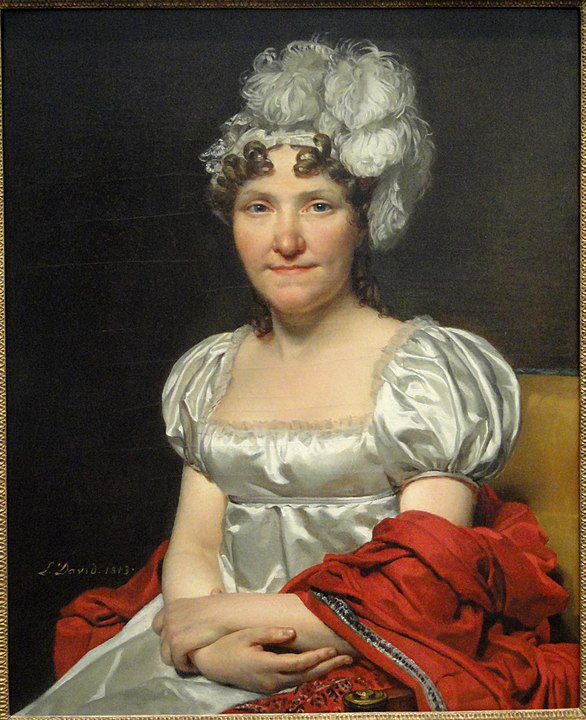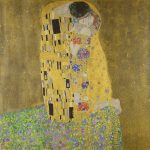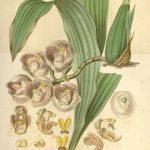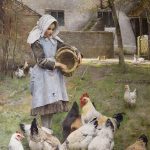
When we think of Jacques-Louis David, the towering figure of Neoclassical art, we often imagine his stern, grand historical paintings like The Death of Socrates and Napoleon Crossing the Alps. His works are celebrated for their crisp lines, heroic themes, and sharp focus on political and cultural upheavals. But behind the masterful brushwork and revolutionary ideals lies a different kind of story—a love story that shaped his life just as much as his art. The tale of Jacques-Louis David (1748–1825) and his wife, Charlotte David (1758–1826), may not be as famous as his paintings, but it’s a beautiful and compelling part of his legacy, though it came to a surprising end before rekindling.
Let’s explore the emotional landscape of David’s relationship with Charlotte, a love that weathered tumultuous political climates, artistic growth, personal challenges—and eventually, separation and reconciliation.
The Beginning: A Revolutionary Love
Jacques-Louis David met Charlotte Marguerite Pécoul in 1782, when he was 34 and well on his way to becoming one of the most influential artists of his generation. Charlotte, 24 at the time, was the daughter of a wealthy building contractor, which gave her family the prestige and influence David needed to cement his position in Parisian society.
In the late 18th century, marriages like theirs were often about status rather than love. But for David and Charlotte, their connection grew into something deeper. Their relationship blossomed during a period of great personal growth for David, as he was shifting from the Rococo style to the Neoclassical approach that would define his legacy.
The couple married in 1782, in a ceremony that marked a significant moment in David’s personal life, as he was preparing to take on larger public commissions and play a key role in shaping the future of French art. Charlotte, known for her warmth and loyalty, provided the stability he needed in the whirlwind of his rising fame.
Political Storms and Personal Struggles
David’s life was as dramatic as the subjects of his paintings. He became an ardent supporter of the French Revolution, with his art serving as a tool for political propaganda. His close association with radical figures like Maximilien Robespierre led to his appointment as the official painter of the Revolution.
However, these political entanglements put enormous strain on his marriage. Charlotte came from a royalist family, and David’s extreme revolutionary views were increasingly at odds with her values. The tension grew as David became more involved with the Jacobins, and in 1793, when he voted for the execution of King Louis XVI, it drove a deep wedge between them.
In 1794, David was imprisoned after Robespierre’s downfall. While Charlotte initially supported her husband, the political turmoil and David’s radical actions proved too much for their marriage. They divorced that same year, unable to reconcile their political differences. This was a significant emotional blow for both of them, as their relationship had once been a source of stability in the chaotic revolutionary years.
The Surprising Remarriage: A Love Rekindled
However, the story of Jacques-Louis and Charlotte doesn’t end with their divorce. After David’s release from prison in 1795, they spent some time apart, each reflecting on their lives and the political climate that had torn them apart. Despite their earlier separation, the emotional connection between them remained strong.
In a surprising turn, they remarried in 1796, just two years after their divorce. This reunion speaks to the depth of their bond, which survived the most intense political upheaval of the French Revolution. Their remarriage marked a new chapter in their relationship, as David’s revolutionary fervor had cooled, and they were able to rebuild their life together without the constant strain of political conflict.
This second marriage showed that, despite their differences, their love had endured. Charlotte’s loyalty and affection for David never truly wavered, even during their time apart. For David, who had faced public disgrace and personal challenges, this reunion brought a sense of emotional stability that would carry him through the rest of his life.
Art and Emotion: How Love Influenced David’s Work
One might wonder: did David’s love for Charlotte impact his art? While it’s tempting to view his works as purely political or historical, there are traces of his personal life and emotions scattered throughout his oeuvre.
Take, for example, The Lictors Bring to Brutus the Bodies of His Sons (1789). This painting, widely regarded as a masterpiece of Neoclassical art, depicts the moment when Lucius Junius Brutus, a Roman statesman, is presented with the dead bodies of his sons, whom he had condemned for plotting against the republic. The tension between public duty and personal sorrow is palpable, and some art historians suggest that David was channeling his own inner conflict—his fierce revolutionary ideals against the more tender, personal emotions that surely surfaced in his relationship with Charlotte.
In portraits of Charlotte, such as the 1813 Portrait of Madame David, David captures her serene, dignified presence. This painting, created after decades of marriage (and long after their remarriage), speaks to the deep affection and respect David had for his wife. The intimacy in this piece contrasts sharply with the grandeur and intensity of his political works, showing a more personal, vulnerable side to the artist.
Exile and Devotion: Life After the Revolution
After Napoleon’s defeat in 1815, David, who had supported the emperor, was forced into voluntary exile in Brussels. His political affiliations made him an outcast in France, and though his public life had crumbled, Charlotte once again stood by him. Despite the difficulties they had faced earlier in their marriage, Charlotte chose to follow David into exile, showing her enduring commitment.
Their life in Brussels was quieter, without the revolutionary chaos that had defined their earlier years. Though David’s health began to decline in the 1820s, he continued to paint. His works from this period are less grandiose and more introspective. Without the political pressures of the past, David focused more on personal satisfaction in his later works, and Charlotte’s steady presence during this time was a source of comfort.
David passed away in 1825, and Charlotte survived him by just one year, passing away in 1826. Even after their tumultuous journey through politics, revolution, and personal strife, they remained united until the end.
A Legacy Beyond Art
It’s easy to focus solely on Jacques-Louis David’s artistic achievements, but his marriage to Charlotte offers a more human perspective on the man behind the masterpieces. Their relationship was tested by political turmoil, leading to their divorce in 1794, but their remarriage in 1796 speaks volumes about the depth of their bond. Despite the strains of public life, they found a way back to each other.
David passed away in 1825 in Brussels, and Charlotte followed him shortly after in 1826. Their story, marked by love, separation, and reconciliation, remains a testament to the power of enduring love, even amidst political and personal upheaval.
The Feminine Influence in David’s Life and Art
Jacques-Louis David wasn’t just shaped by his political ideals or his male mentors; the women in his life, especially Charlotte, played an equally important role. While his art often glorified the strength and heroism of men, his relationships with women, particularly Charlotte, offered him emotional grounding.
It’s fascinating to think that while David’s male-centric historical scenes were capturing the public imagination, his personal life was anchored by a quiet, yet powerful feminine presence. In many ways, this dichotomy between public art and private emotion is what makes David’s legacy so intriguing.
Lessons from Jacques-Louis David and Charlotte: Love Endures, Even Through Separation
The story of Jacques-Louis and Charlotte David isn’t just about art or politics—it’s about love enduring through some of the most intense periods of history, even when that love couldn’t survive within the bounds of marriage the first time around. Their relationship reminds us that even the most celebrated and ambitious figures need someone by their side, offering support through life’s challenges. And sometimes, those challenges lead to separation, but the emotional connection remains.
For anyone who’s ever wondered whether love can survive ambition and adversity, the answer lies in the story of Jacques-Louis David and Charlotte. It’s a testament to the strength of human connection, the power of loyalty, and the beauty of standing by someone, even when the formal relationship ends. In the end, their love was as enduring as David’s art—perhaps even more so.




